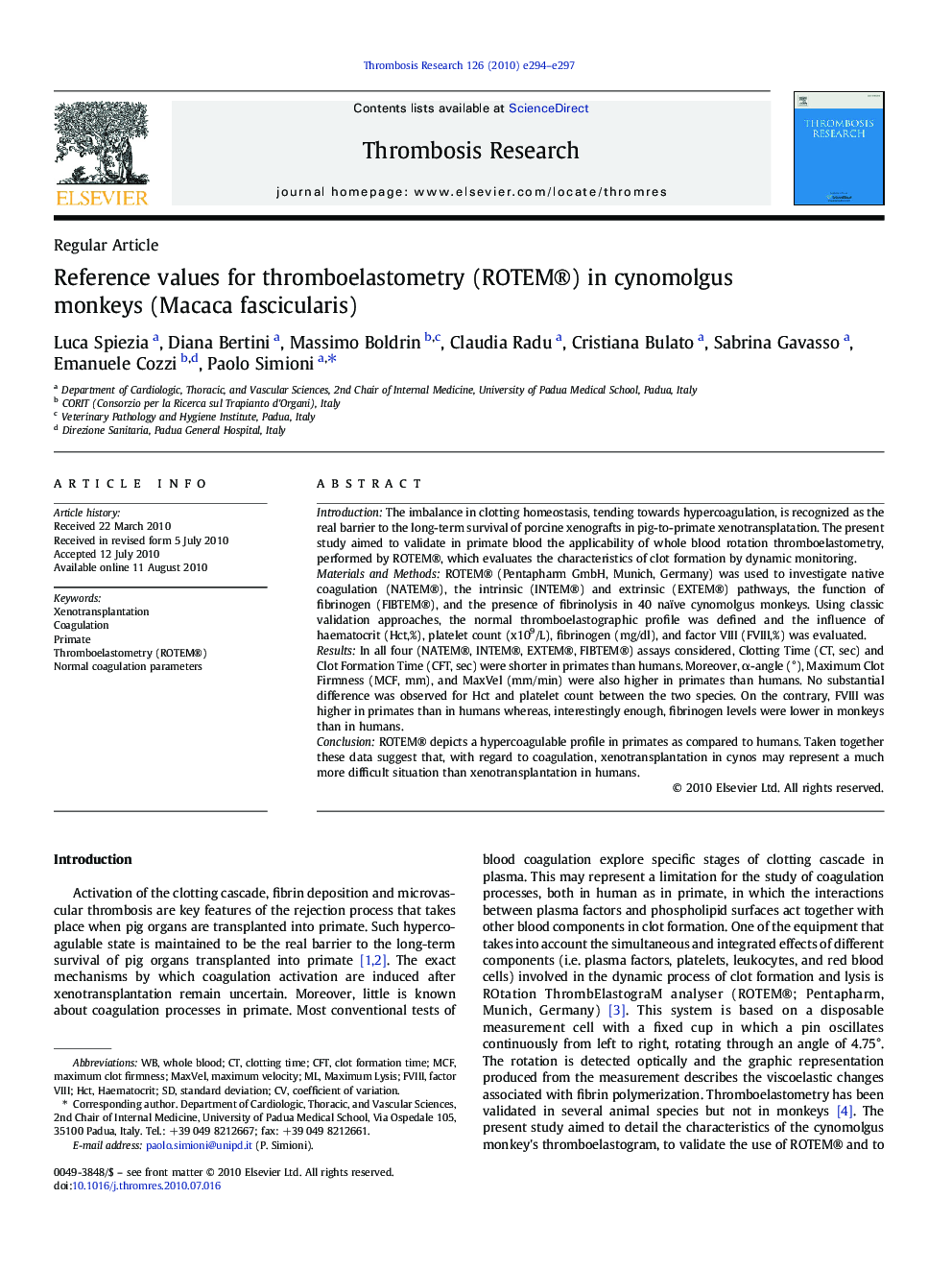| Article ID | Journal | Published Year | Pages | File Type |
|---|---|---|---|---|
| 3027732 | Thrombosis Research | 2010 | 4 Pages |
IntroductionThe imbalance in clotting homeostasis, tending towards hypercoagulation, is recognized as the real barrier to the long-term survival of porcine xenografts in pig-to-primate xenotransplatation. The present study aimed to validate in primate blood the applicability of whole blood rotation thromboelastometry, performed by ROTEM®, which evaluates the characteristics of clot formation by dynamic monitoring.Materials and MethodsROTEM® (Pentapharm GmbH, Munich, Germany) was used to investigate native coagulation (NATEM®), the intrinsic (INTEM®) and extrinsic (EXTEM®) pathways, the function of fibrinogen (FIBTEM®), and the presence of fibrinolysis in 40 naïve cynomolgus monkeys. Using classic validation approaches, the normal thromboelastographic profile was defined and the influence of haematocrit (Hct,%), platelet count (x109/L), fibrinogen (mg/dl), and factor VIII (FVIII,%) was evaluated.ResultsIn all four (NATEM®, INTEM®, EXTEM®, FIBTEM®) assays considered, Clotting Time (CT, sec) and Clot Formation Time (CFT, sec) were shorter in primates than humans. Moreover, α-angle (°), Maximum Clot Firmness (MCF, mm), and MaxVel (mm/min) were also higher in primates than humans. No substantial difference was observed for Hct and platelet count between the two species. On the contrary, FVIII was higher in primates than in humans whereas, interestingly enough, fibrinogen levels were lower in monkeys than in humans.ConclusionROTEM® depicts a hypercoagulable profile in primates as compared to humans. Taken together these data suggest that, with regard to coagulation, xenotransplantation in cynos may represent a much more difficult situation than xenotransplantation in humans.
